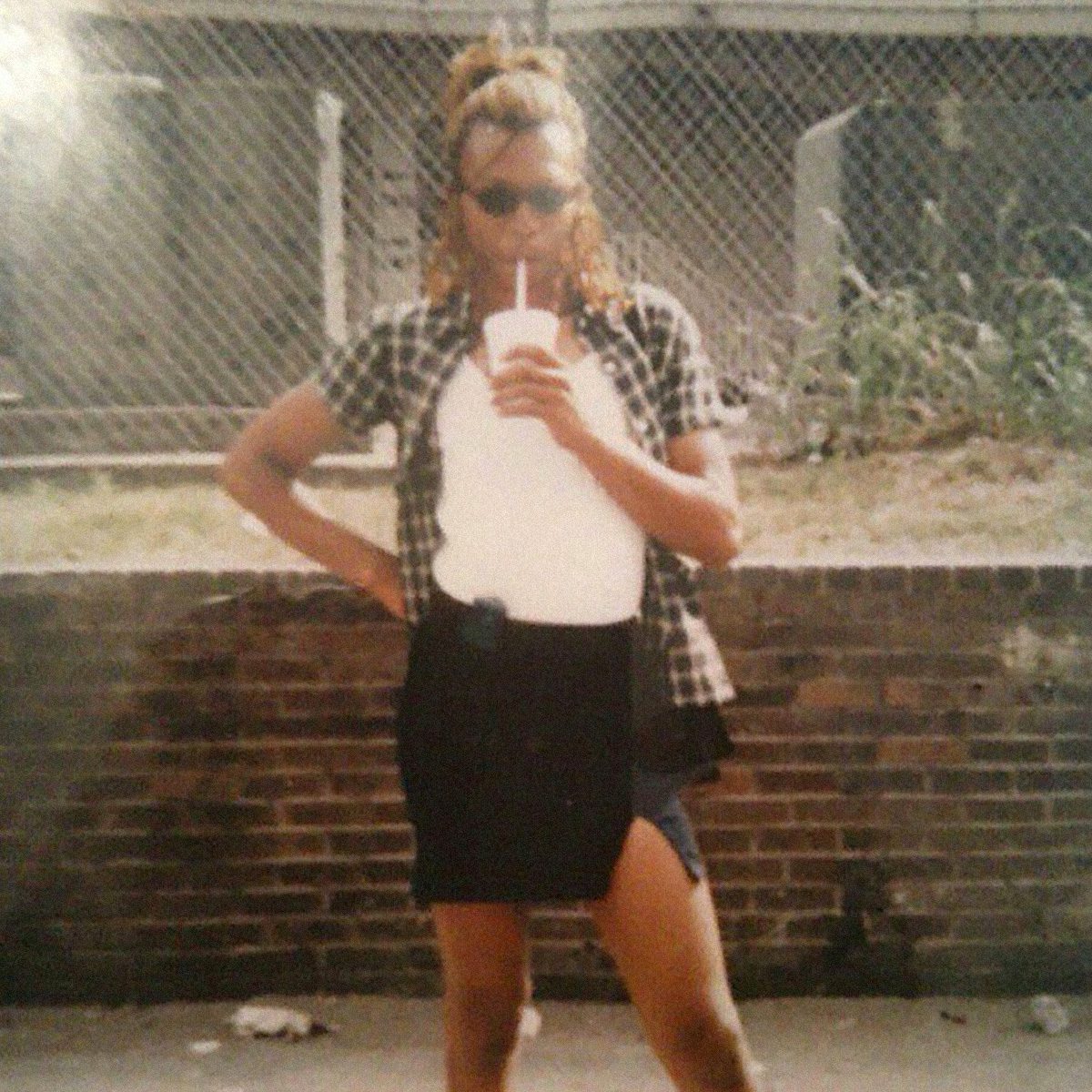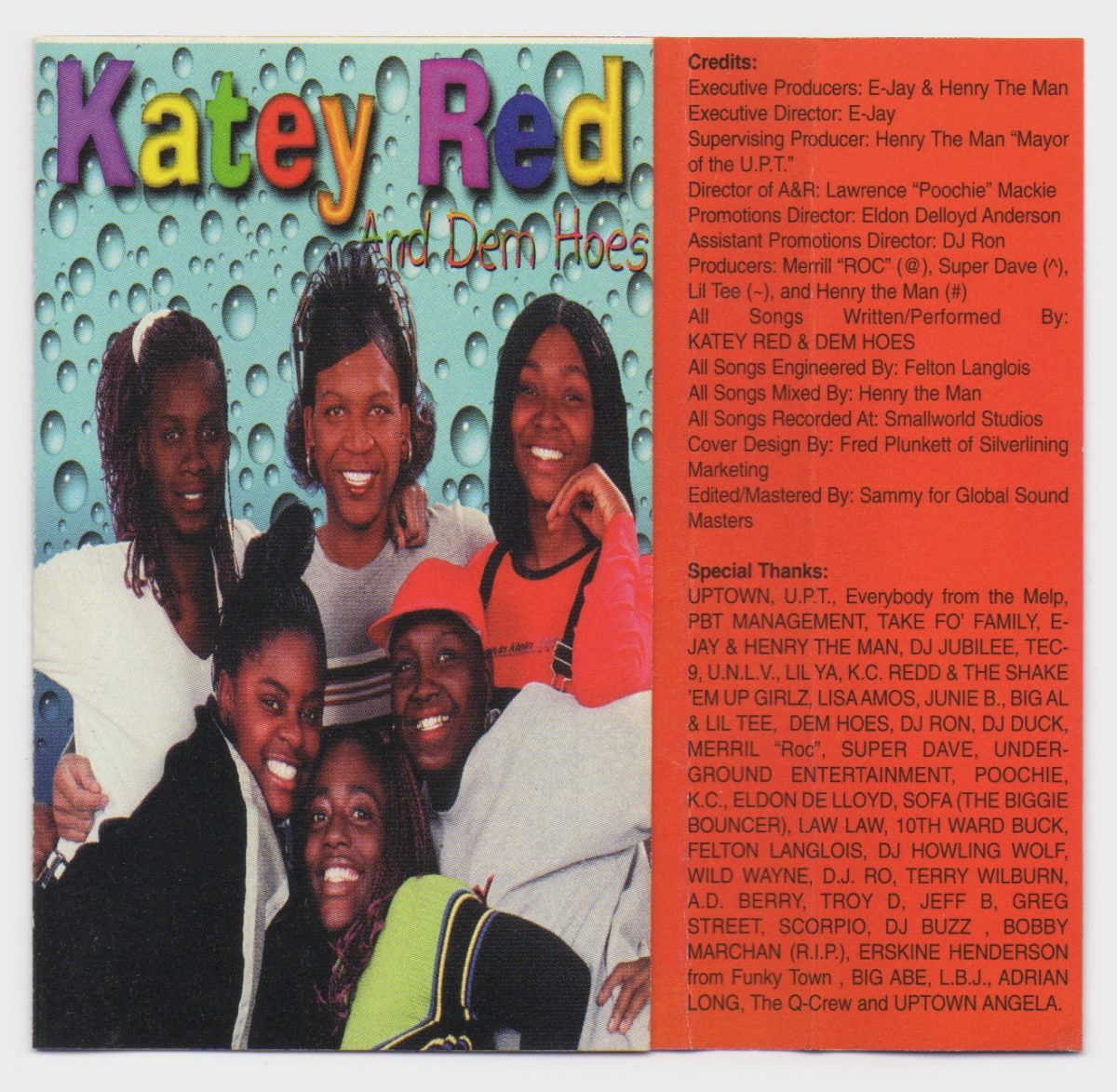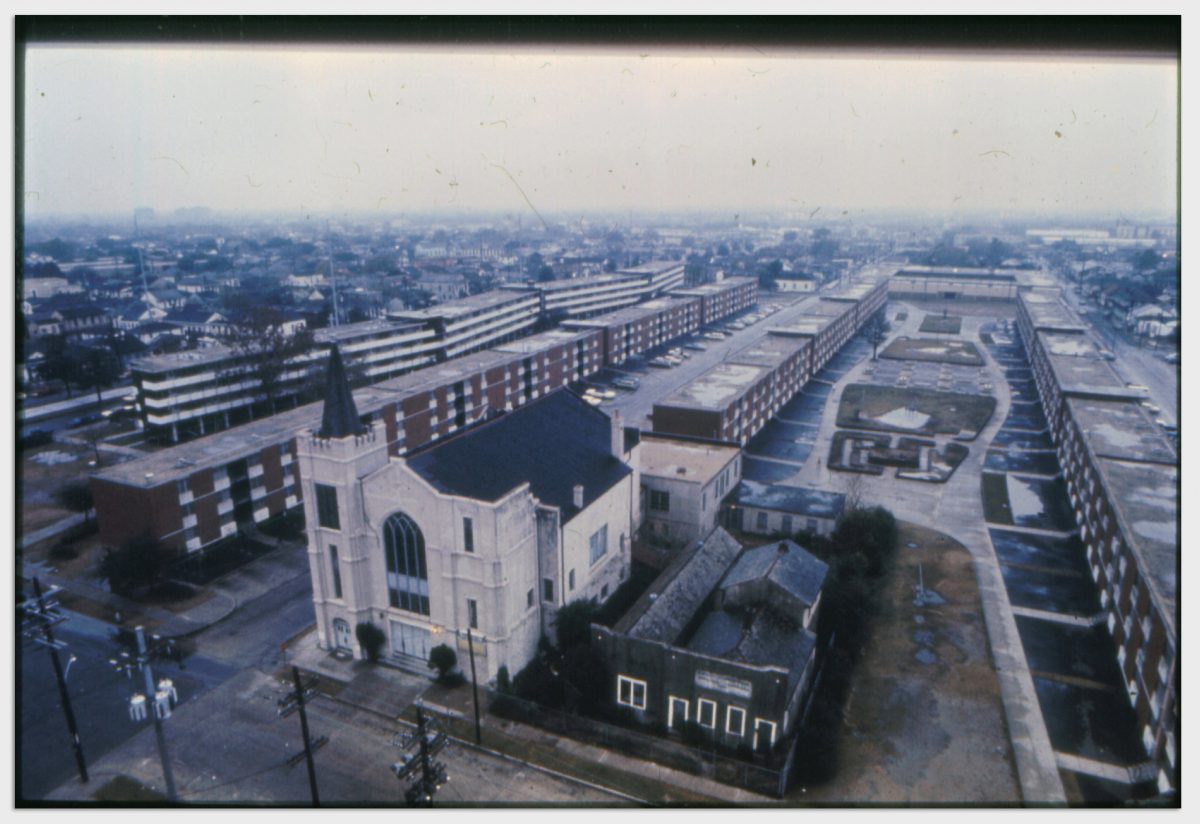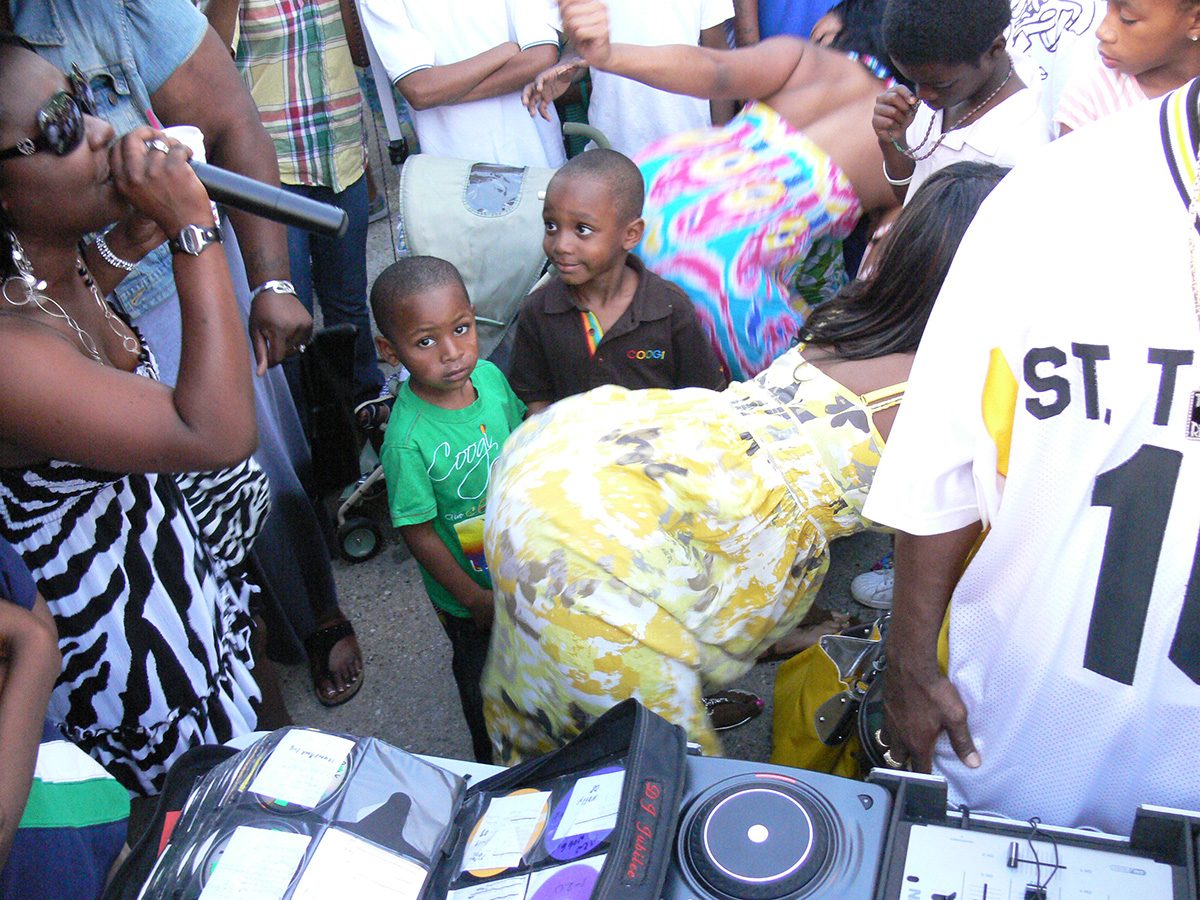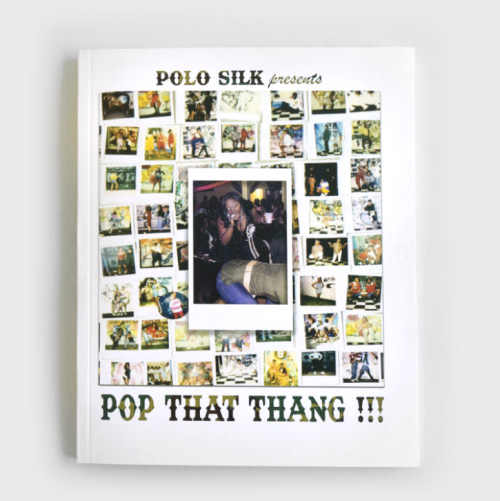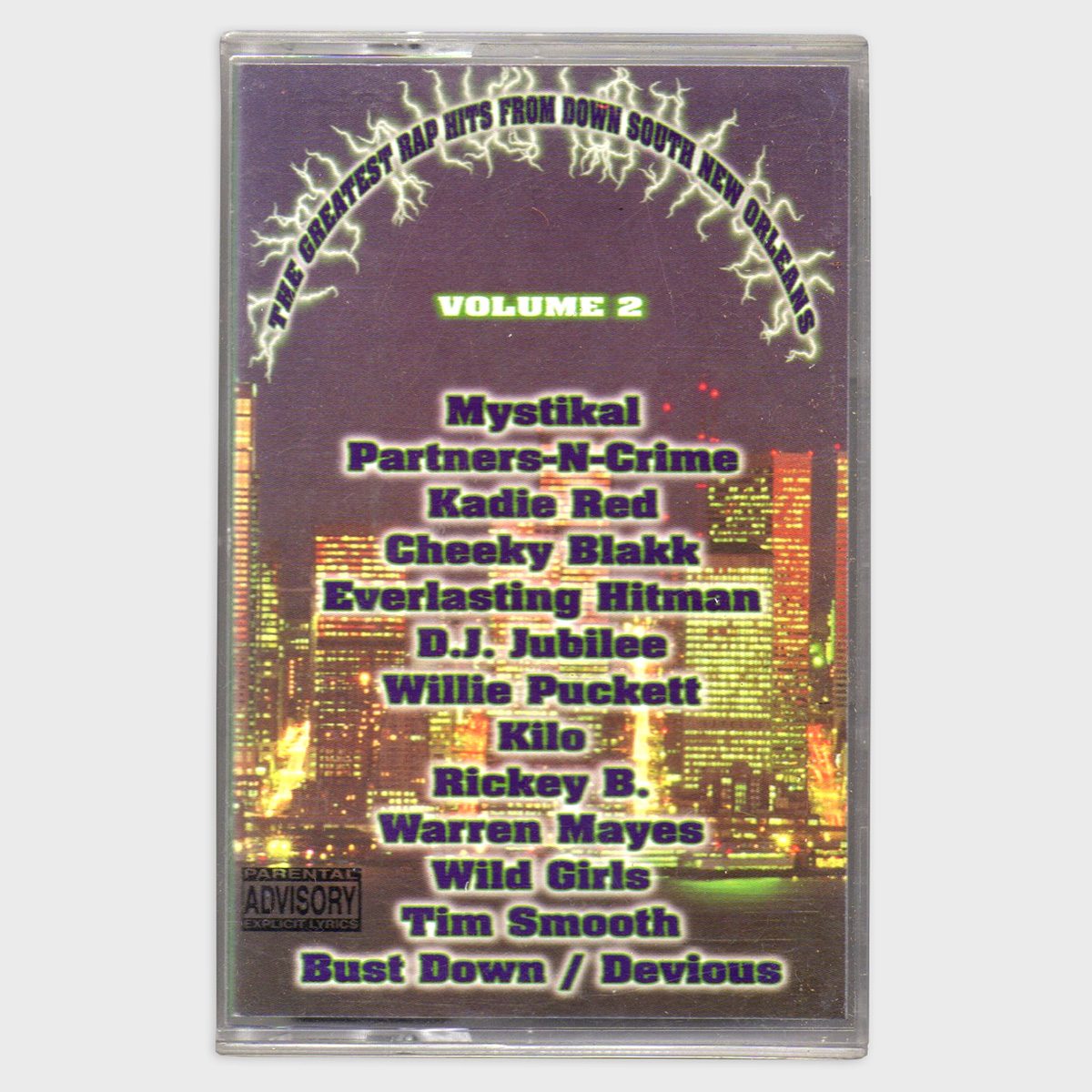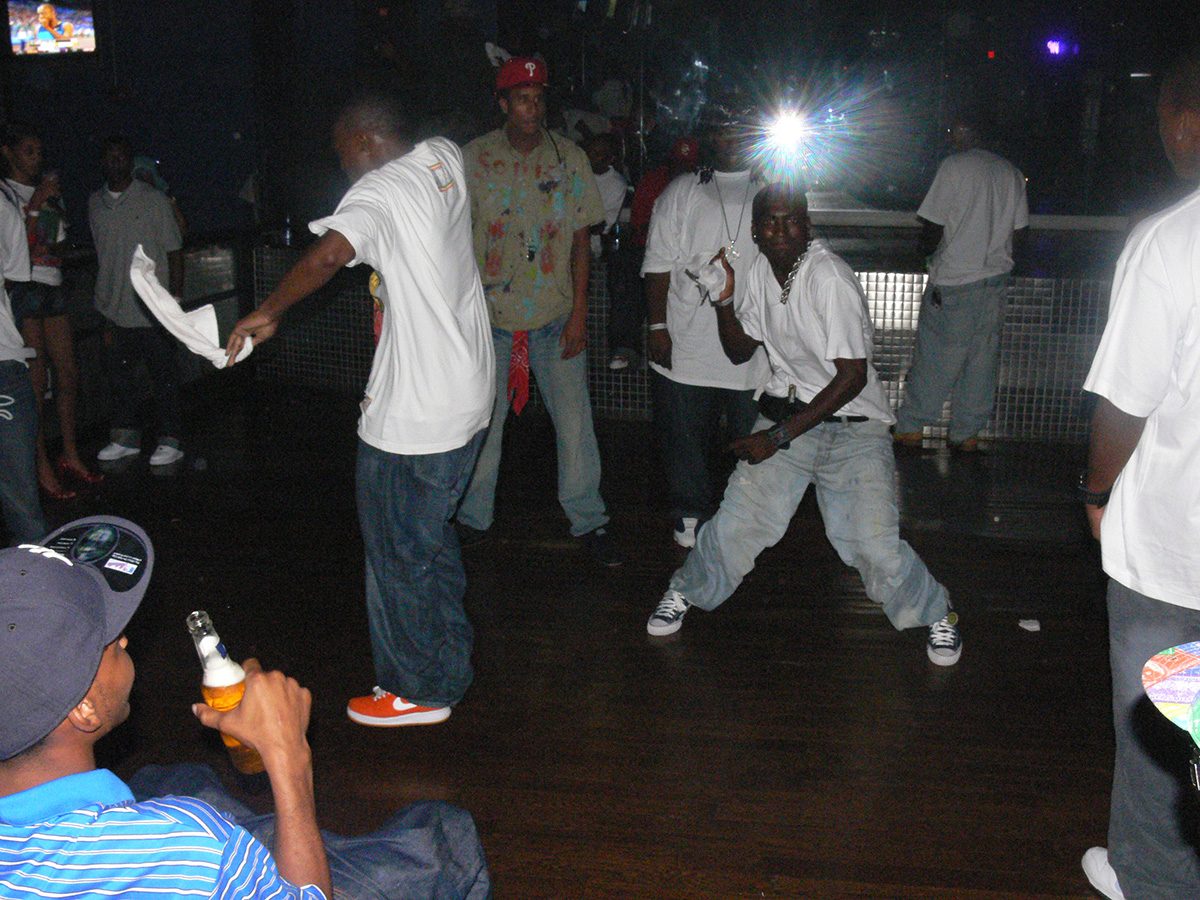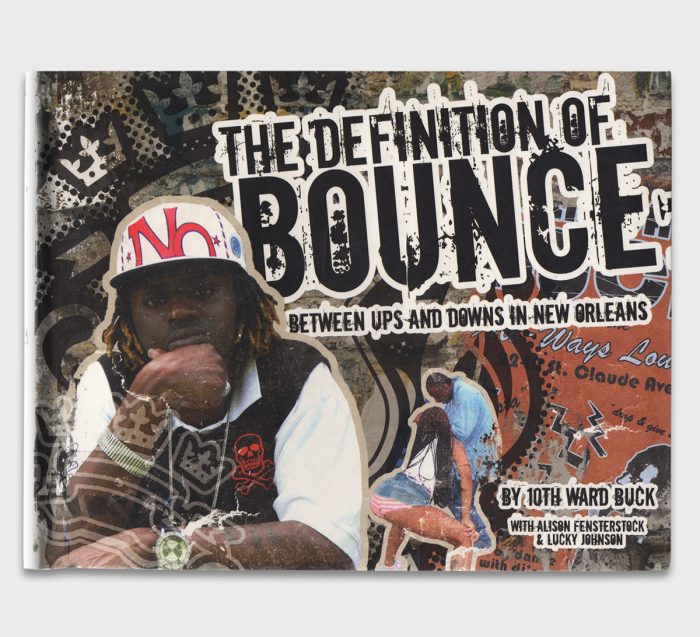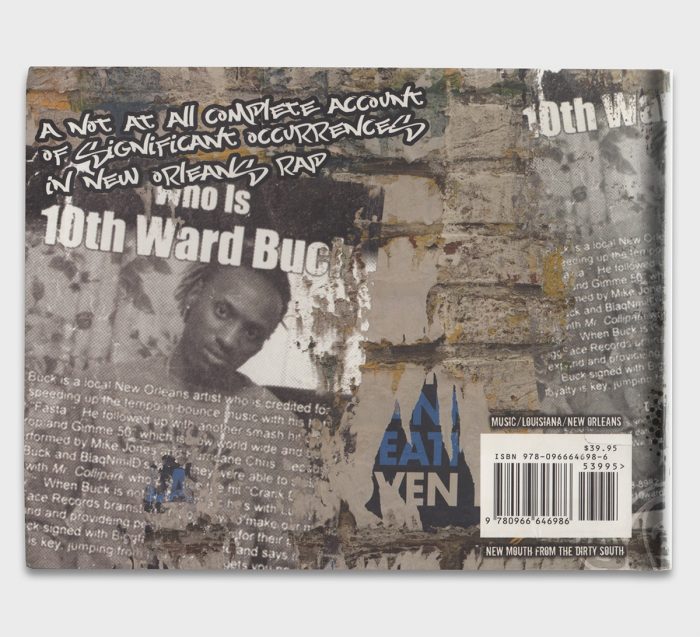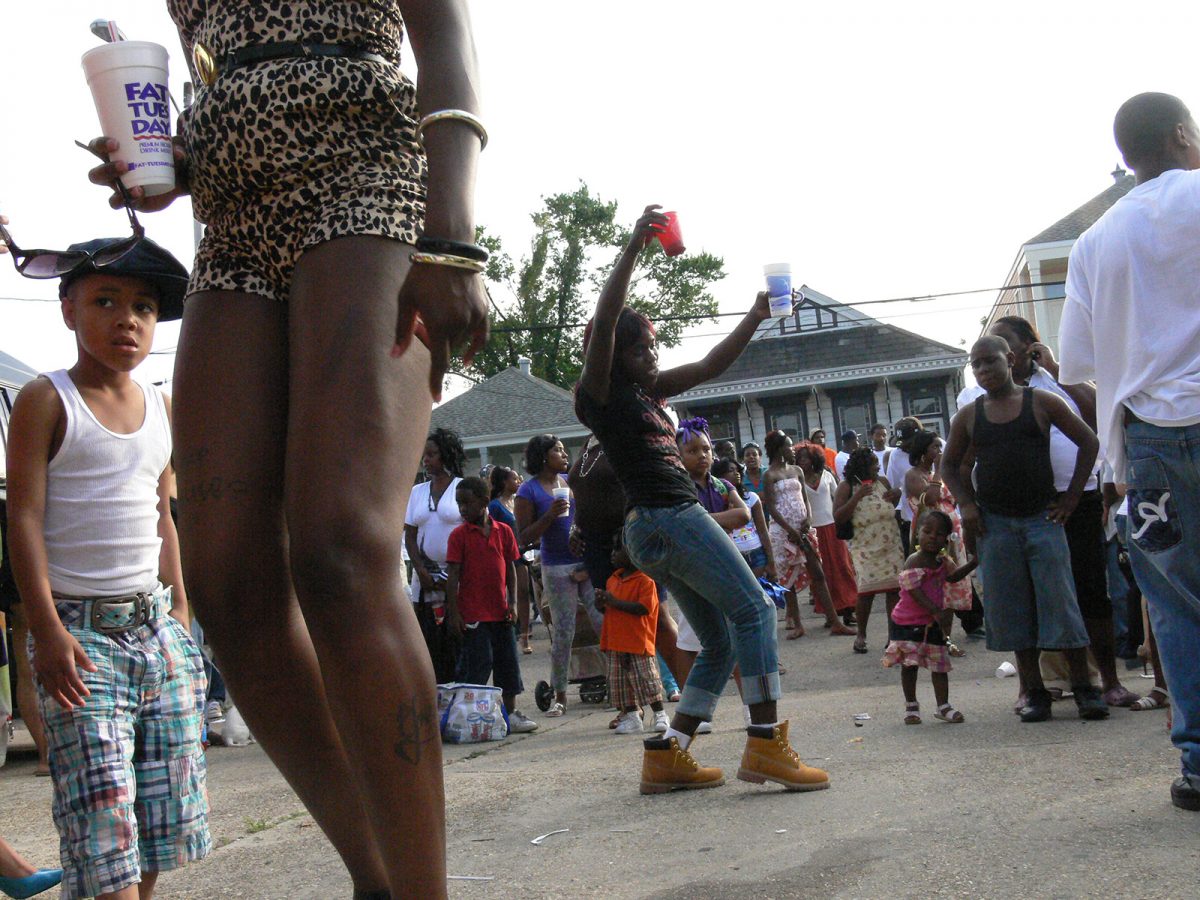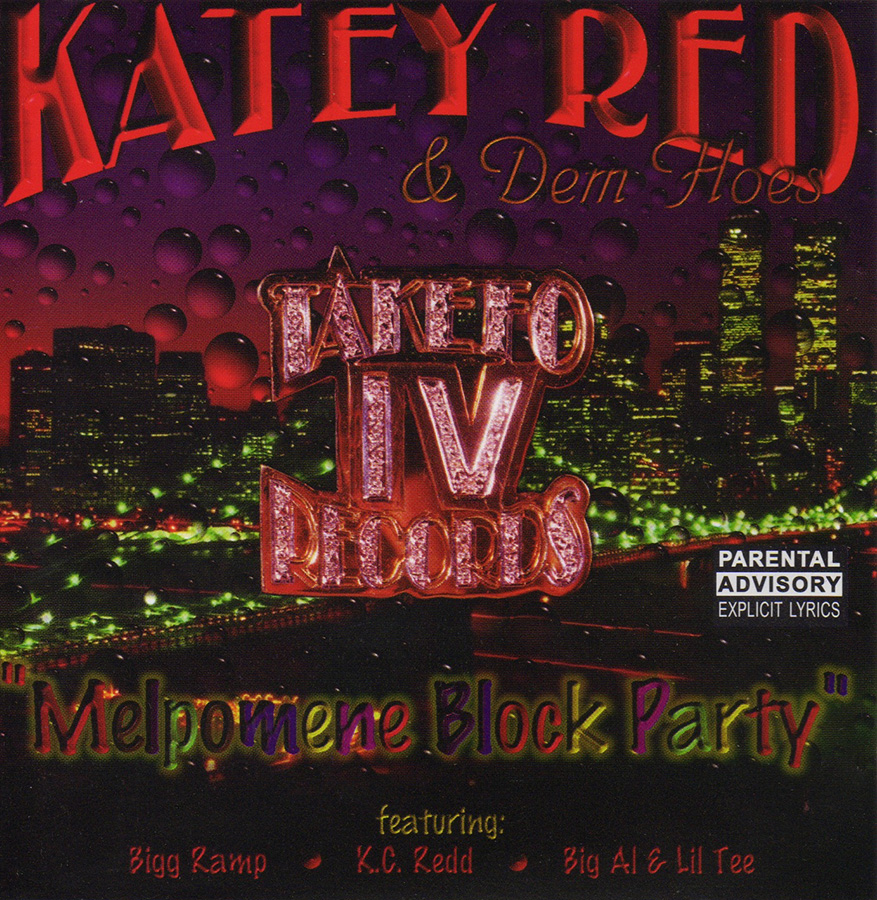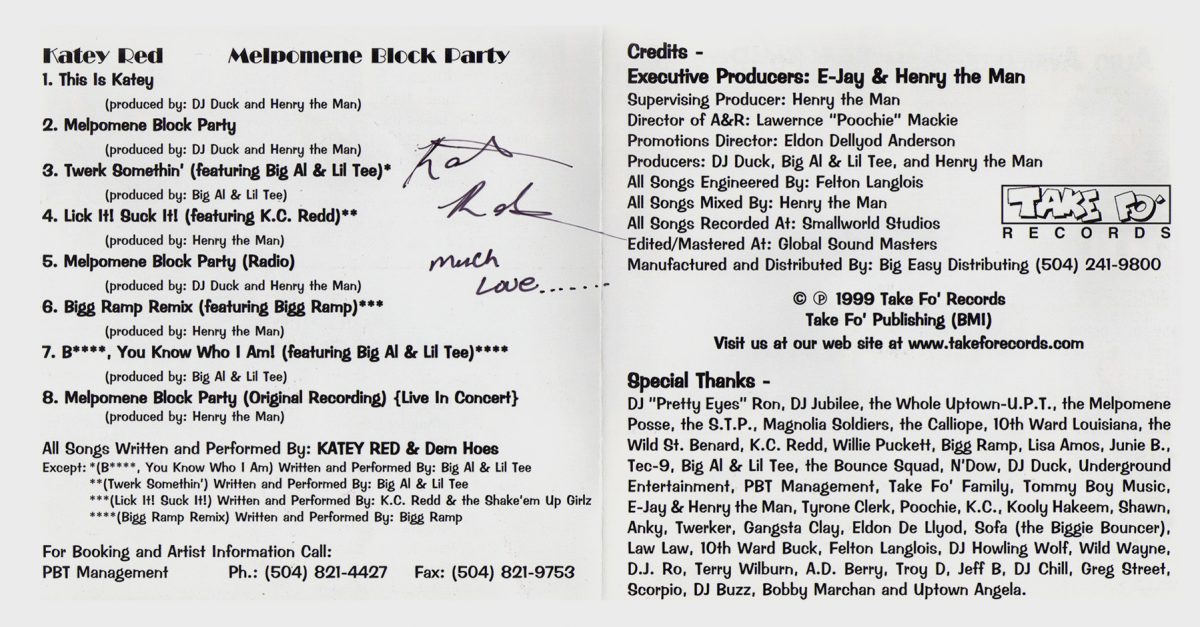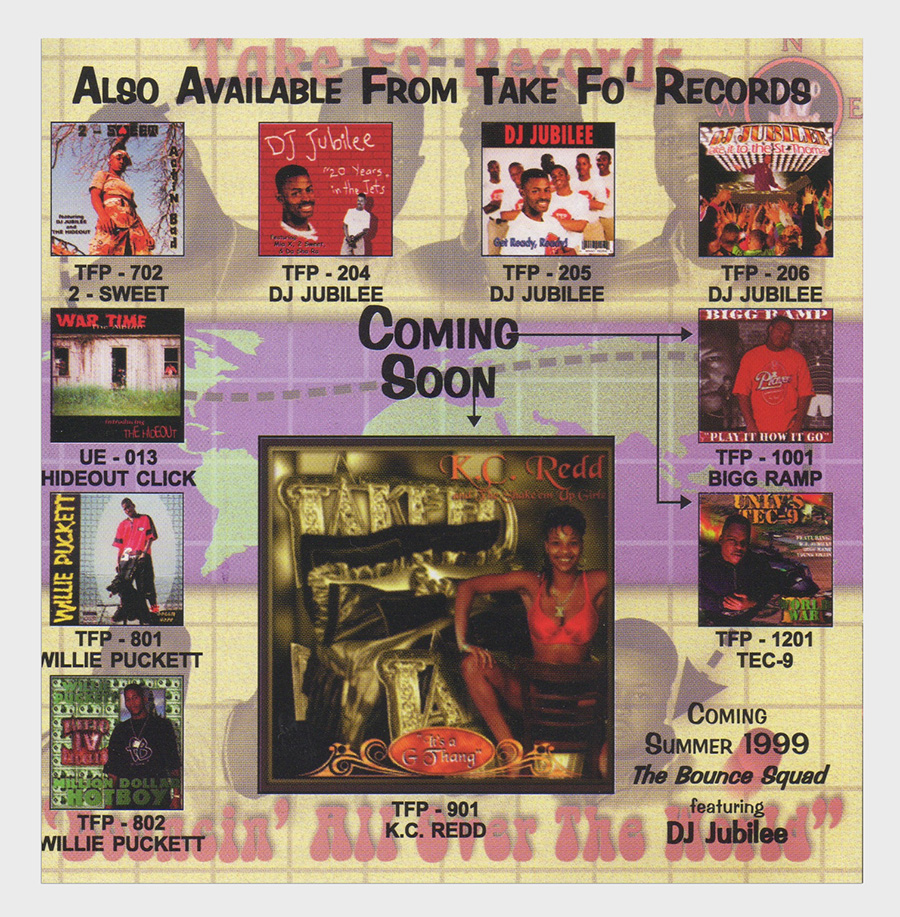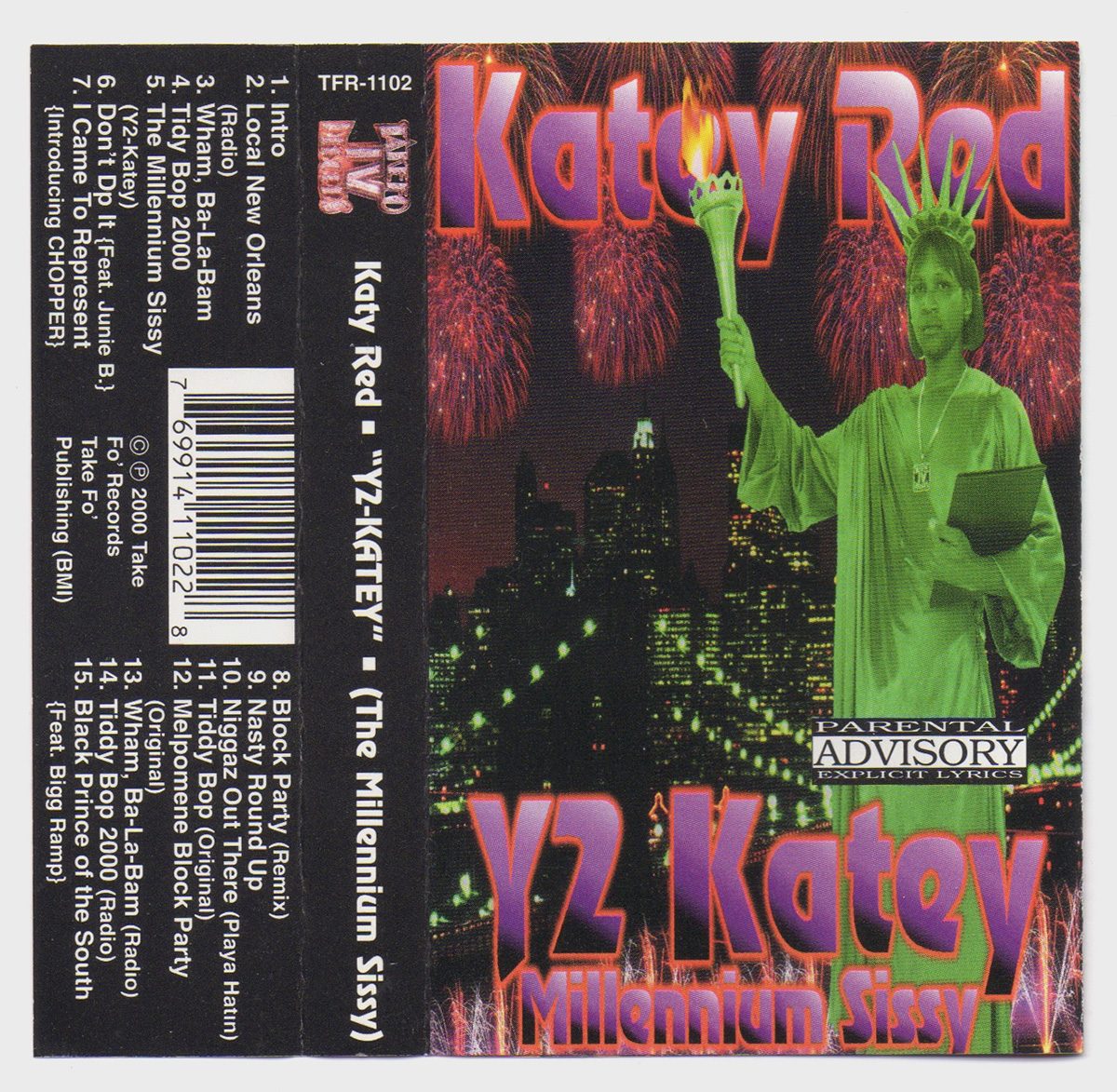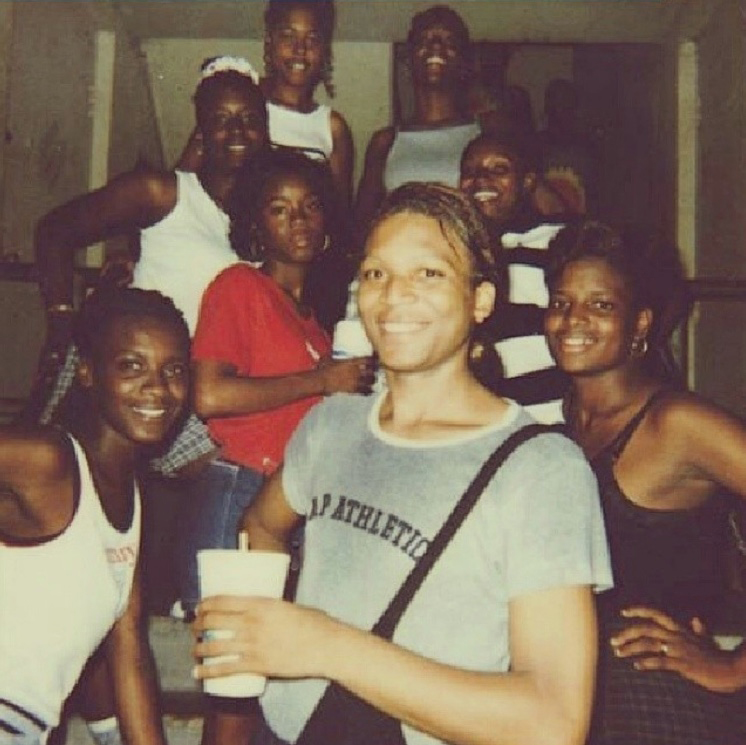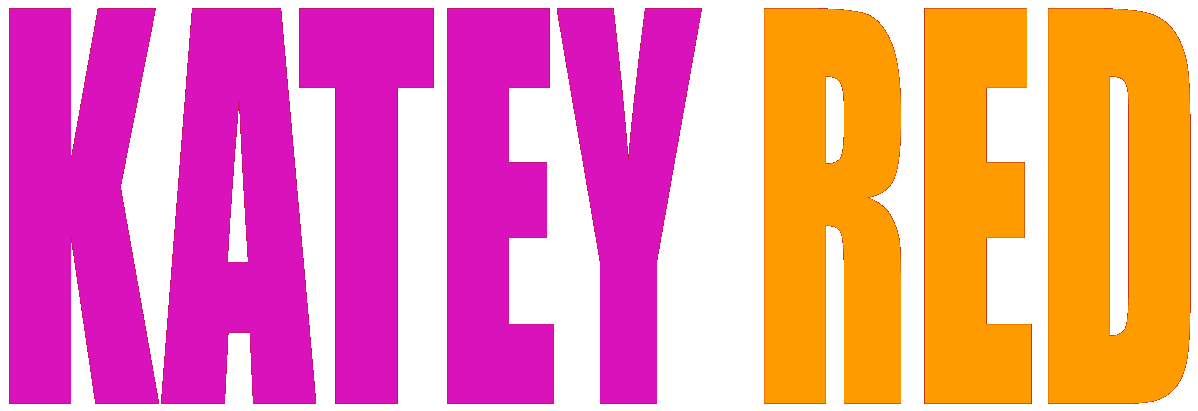
Katey Red is a Bounce artist, rapper, and entertainer from New Orleans, Louisiana. Over the last two decades, she’s been responsible for some of the most relentless, high energy, and unafraid club music ever heard. Working at the frontier of Bounce music – the fiercely local New Orleans genre of party music – Katey led a new generation of artists who pushed the rhythmic complexity and narrative possibilities of the style.
Katey Red was raised in the Melpomene Projects, Uptown New Orleans, where her strong sense of self emerged almost immediately. In her own words, “I had to be like four or five when I found out I was going to be a little diva.” But it was her shameless freestyle delivered at a block party that brought the teenaged Katey to public attention. “I’m a punk under pressure,” she announced, “when we finish leave my money on the dresser.” Just three weeks after debuting these lines to an audience, Katey had a record deal.
Perhaps the most arresting of Katey Red’s acts was her decision to perform as an out, gay and transgender woman from the start of her career. In 1999, when her first CD was released, the possibility of a gay rapper was unfathomable, and the effect was both profound and immediate. “When Katey came on the scene so flamboyant and full-blown,” recalled rapper Sissy Nobby of his own beginnings, “I’m like, ‘Hell I can do this! I’ma just come out too!’” Katey opened the doors for a host of gay Bounce artists including Big Freedia, Vockah Redu, and Nicky da B.
Since her debut, Katey Red has released two albums, collaborated with Magnolia Shorty, Akron/Family, and Galactic, appeared as herself on the HBO television show Treme, and toured the world. To mark the 20th anniversary of Katey Red’s first CD, Melpomene Block Party, Know Wave takes a close look at the beginning of her career: her groundbreaking early performances and records, and the effect she had on New Orleans, Bounce music, and liberation.
Please note: because of the destructive force of Hurricane Katrina, many of the photos and documents relating to this story no longer exist. We have worked with the participants in this review to provide the best possible materials, but some of the images below will show the effect of this loss.
Katey Red
Addie
Jordan Blanton
Giuseppe Catania
Kiwanda “Nabe” Clay
G.K. Darby
Alison Fensterstock
Felton Langlois
Meshe
Kimberly Johnson Minix
Noonie (Penny)
Lefty Parker
Angeliska Polacheck
Polo Silk
Quintron
Preservation Resource Center of New Orleans
Rusty Lazer
Sissy Nobby
Trekay
Take Fo’ Records
“Bounce was real popular, but we had our own little thing, you know? Katey was the head of that. She was our sissy, as we would call it. Our punk under pressure. And it was kind of surprising that the city did take such a huge liking into what we were doing. We didn’t think we were doing anything to get the city’s attention. We danced, and we played. And he ventured from, she ventured from that. I don’t like to call him ‘him’ no more. We did, when we were younger, but as he transitioned to Katey, you know, we call her ‘her.’”
– Kiwanda “Nabe” Clay, in a 2019 interview with Know Wave
As a member of the group Dem Hoes, Kiwanda Clay appears on the albums Melpomene Block Party and Y2Katey and performed with Katey Red countless times.
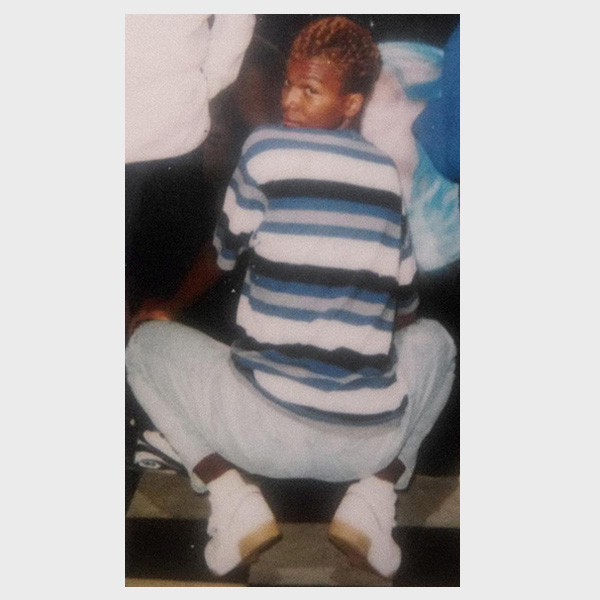
“Originality. Her personality. And just being so, you know, humble. You know what I’m saying? That’s what I love, that’s what I live for. I’m a real big fan. Even though I am who I am, at the end of the day, Katey was a big influence with me as well as with others. Katey played a big part in me doing what I am doing now.”
– Sissy Nobby, in a 2019 interview with Know Wave
Sissy Nobby is a Bounce artist based in New Orleans.
“I really fell in love with Katey. Katey has got the best sensibility for writing hooks of almost anyone on the scene. Katey is just spitting hooks out of her mouth like crazy. Not that it’s a competition, but she is the best. A weird little yelping twist combined with the words that she chooses, she’s just extremely gifted at that.”
– Quintron, in a 2019 interview with Know Wave
Katey Red, “Titty Bop.” Originally released on the album Y2Katey (The Millennium Sissy), 2000
Quintron is a musician based in New Orleans. In 2001, he organized a concert for Katey Red at his home, beginning a decades-long relationship between the two artists.
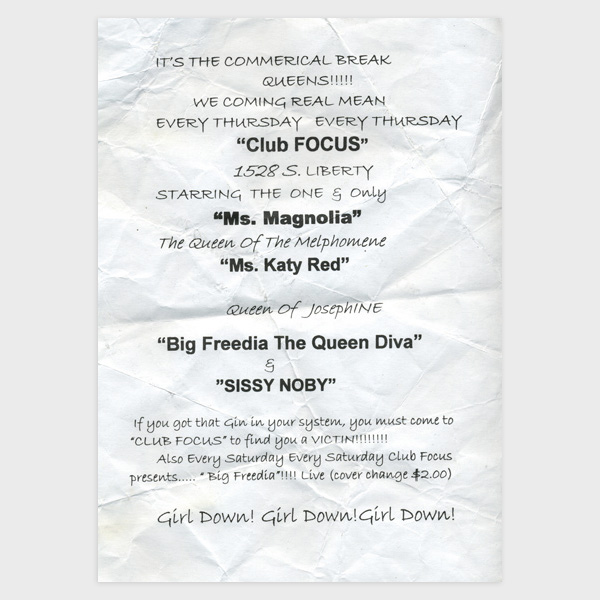
“My interest in queer art began at home in New Orleans. Listening to Katey Red and Big Freedia at parties as a youth.”
– Frank Ocean, in an interview with Tom Jackson, published in Gayletter, Issue 10, 2019
Frank Ocean is a musician born and raised in New Orleans.

“When I met Katey? She’s 16 years old, I’m 15 years old, and I’m partially in the closet still. I’m sitting here talking to someone, Katey walks up and she has like a haircut, and it’s colorful. And I’m like, that’s bold at 16 years old. So I want to know who she is! I need to get acquainted with her to find out how she’s able to be okay with doing this, like ‘where is your mom?’ I want to have colorful hair, but I’m scared!”
– Addie, in a 2019 interview with Know Wave
Addie is one of Katey Red’s oldest friends.
“I moved into the project I want to say around 1986. And Katey was staying across from where I was staying at. My mom used to make me come outside and Katey would be outside. But she used to be messing with me, and tried to fight me at one point. After that we started hanging and we just grew together. To this day, that’s my sister.
I was the one who started saying ‘Katey Red is a… dick sucker!’ We was in the projects, and I would call out for Katey, like I would holler ‘Katey Red is a dick sucker!’ and she would answer. After awhile, when Katey started really rapping, we put that in there.”
– Treaky, in a 2019 interview with Know Wave
As a member of the group Dem Hoes, Treakey appears on the albums Melpomene Block Party and Y2Katey and performed with Katey Red countless times.
“We started in the Melpomene, you know, that’s where we’re from. We started there in the hallways, beating the drums on, like, abandoned boards. Just chilling, just having fun in the hallways rapping, just saying stuff out of all our heads. Then at parties and stuff, Katey was rapping, and Take Fo’ ended up seeing Katey and picked Katey up or whatever. And he went to doing concerts with different rappers – DJ Jubilee, 10th Ward Buck – he was on some with Cash Money too. We had fun times doing concerts, we was his background singers, and we had his back. It just was fun, he was a fun person to be with. That’s my family and I love him. He’s not a drama person, he just likes to have fun. He likes to entertain. That’s his thing.”
– Kimberly Johnson Minix aka TMGKIM, in a 2019 interview with Know Wave
As a member of the group Dem Hoes, Kimberly Johnson Minix appears on the albums Melpomene Block Party and Y2Katey and performed with Katey Red countless times.
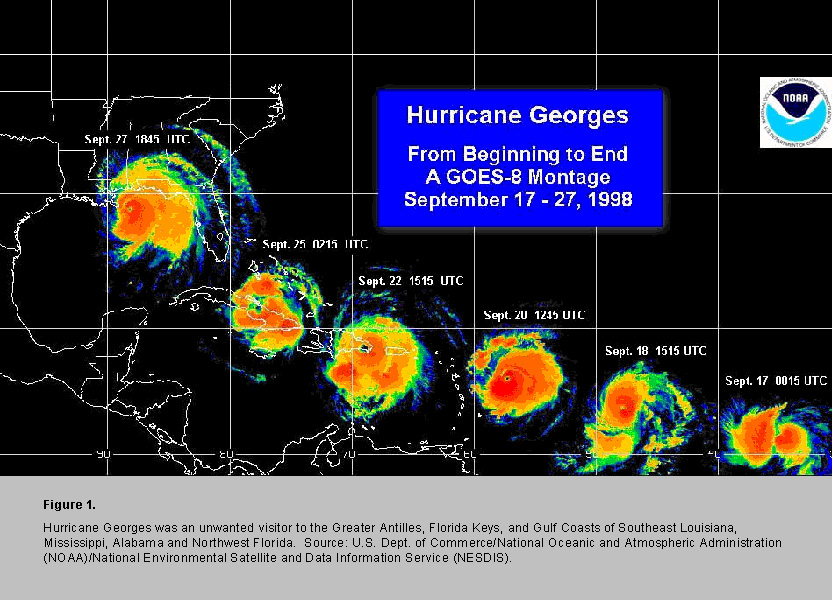
“Katey Red momma and my momma is best, I mean best friends. My momma wound up christening Katey Red, so you know that’s my sister. We had a rough life, it was rough growing up in the project. You had to get it all your own. We did a lot of fighting and shit like that, we was some badass children growing up.
What happened was Hurricane Georges was about to hit and we was sitting in the hallway, drinking our daquiris and smoking. We didn’t want to go outside. We’re all chilling, smoking, drinking, just having fun, and Katey just gets on the rap and starts beating! And there it go! Everybody just shaking they ass while he just rapping and that’s where it all came from. From right there? It was on like Donkey Kong.”
– Noonie (Penny) in a 2019 interview with Know Wave
As a member of the group Dem Hoes, Noonie appears on the albums Melpomene Block Party and Y2Katey and performed with Katey Red countless times.
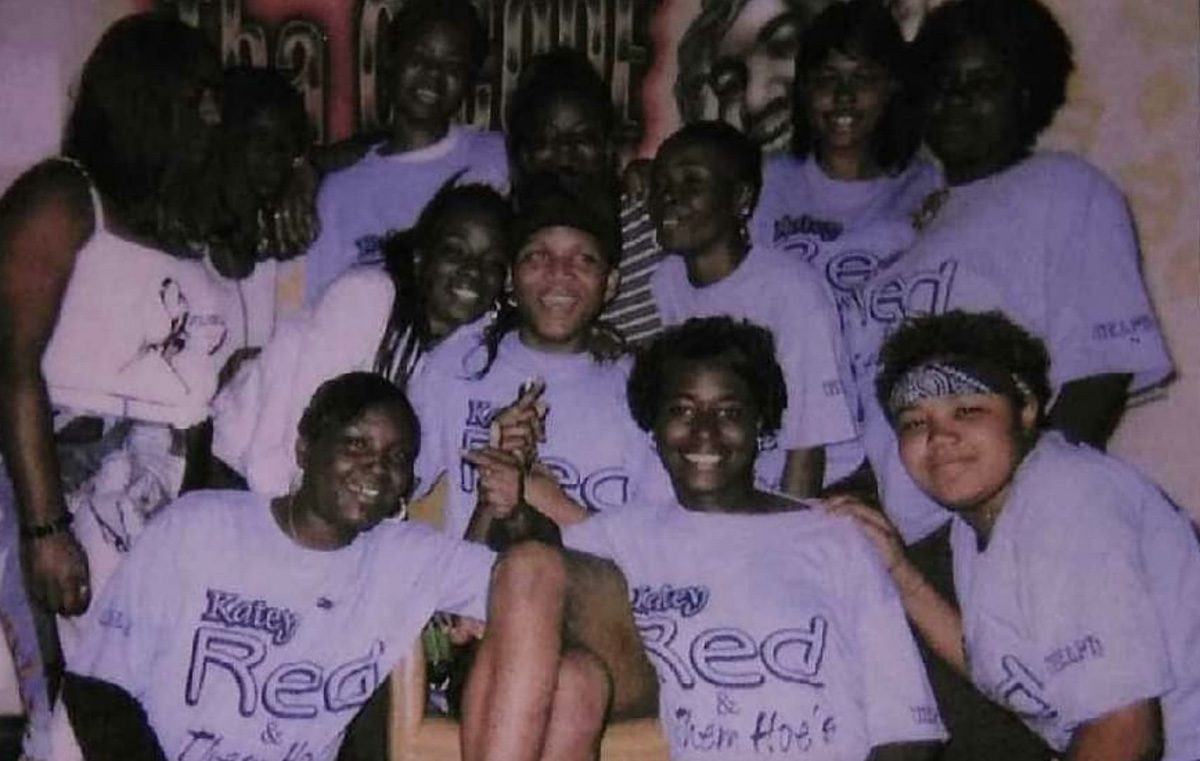
“Alright. My first time on the mic was a Friday. October 21st, 1998, my first time on the mic. We had a teen club behind the Melph, the neighborhood I grew up in, where people gave parties, birthday parties and stuff like that. The next day, they had a block party, and someone asked me to get on the mic again. I was like, ‘no, I’m not a rapper, I just did that last night.’ They were like, ‘I got fifty dollars!’ Give me the mic, you know?
The next weekend, the following Saturday, that’s when someone from Take Fo’ came. They stepped in like, ‘hey, I like what you’re doing. You need to do a demo, hit me up I’ll come get you and the girls.’ The following weekend, that’s when we recorded and did the demo. The weekend after that, that’s when I met all the Take Fo’ family. They wanted me to sign a contract.”
– Katey Red, in a 2019 interview with Know Wave
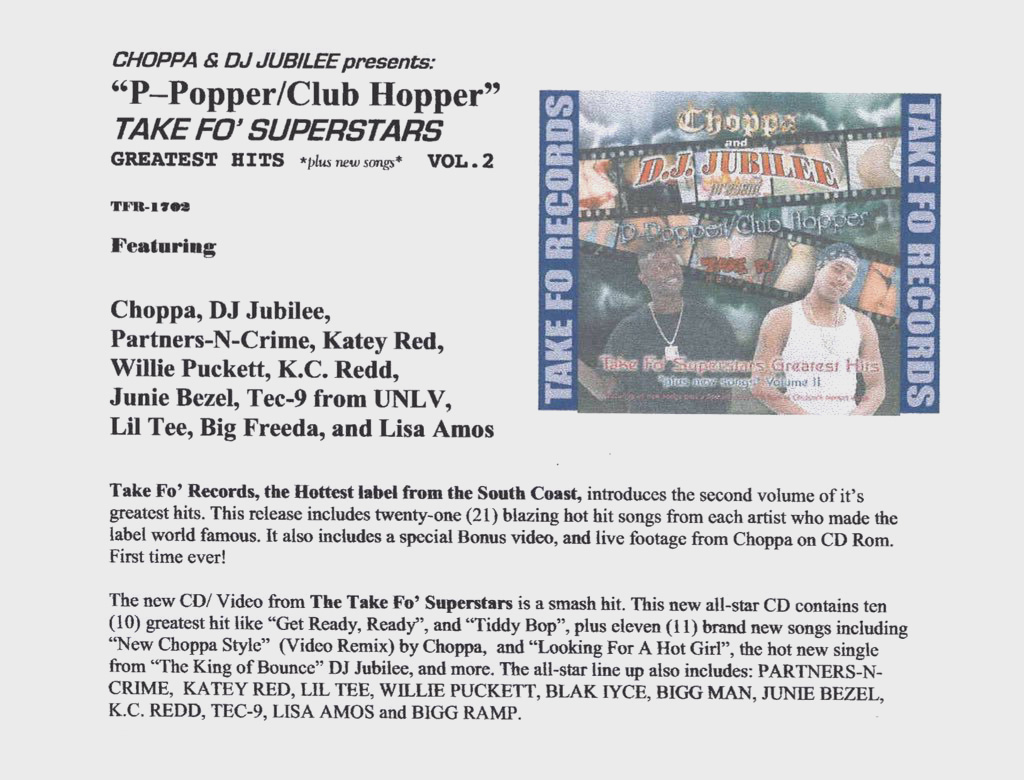
“I had people that go out and scout talent, go to clubs and all that stuff. And one in particular, who actually runs the day to day operation now, his name is Eldon Anderson. Eldon comes to me and says, ‘hey man, there’s this hot hot artist out, you’ve gotta listen to it. The artist’s name is Katey Red.’ He didn’t tell me anything else. I’m like, ‘but we already have an artist named K.C. Redd. That’s going to be confusing!’ He said, ‘it doesn’t matter, Katey Red is hot.’ I’m like, ‘alright, well let me check it out.’ So, he came over here, to the office, and played the tape. And I listened to it, like, ‘oh yeah I like this.’ But then I’m like, ‘hold up. Is this a girl or a guy?’ So it kind of startled me, because I had no clue. They hadn’t told me anything, they just told me to listen to the song. They said, ‘it’s a guy, but it’s Katey. Katey a girl.’ It was totally confusing the way it was presented to me, but when I got it, I was like, ‘dude, you think this is going to sell?’ So Elgin kind of convinced me, ‘think about it. It’s hot, and our thing is to put the hottest music on the streets. Not necessarily just the artist.’ I’m like, ‘okay.’ So that’s how Katey was first beginning.”
– A Take Fo Records executive, in a 2019 interview with Know Wave
Take Fo’ Records, founded in 1992 and based in New Orleans, was the first and only record label focused on Bounce music. Alongside albums by DJ Jubilee, Da’ Sha Ra, and Choppa, Take Fo’ released Katey Red’s albums Melpomene Block Party and Y2 Katey.
“DJ Jubilee, one of bounce’s biggest stars, recalled that as soon as he heard Katey Red’s demo, he saw gold. ‘I said, Look at how many homosexuals are going to buy it. And women are going to think she’s a woman, so they’re going to buy it too. Everybody is going to be biting her stuff. It’s so good.’”
– Neil Strauss, from the article “A Most Unlikely Star,” published in the New York Times, May 28, 2000
“Bounce music is an art form generated in New Orleans, Louisiana, somewhere in between 30 and 40 years ago. We’ve been twerking, we’ve been calling it twerking, shaking, bouncing, we call it all that. Clapping, wiggling. You know, it’s just Bounce. That’s how the female expresses how they enjoy themselves off the music. Cause you shake your ass off the music or whatever ever and the guys they enjoy the music. The heterosexual guys, they enjoy the music by doing their shoulders and their legs and stuff like that. So, the music itself, it expresses freedom, it expresses, you know, have fun.”
– Katey Red, in a 2019 interview with Know Wave
Pop That Thang, by Polo Silk.
Full color, 122 pages, 10 x 8 inches
Published 2017 by Antenna, New Orleans
$35
Order Now“Bounce music’s all a certain tempo, it rides between, I don’t know, 120 and 140 beats per minute or something. So it’s fast and it’s repetitive and there’s certain signature sounds that everybody uses, in certain eras anyways, and then there’s new sounds that are introduced and new styles, it’s a music that very much evolves. I don’t make that music and my head’s not in it enough to tell you specifics about what separates one style of Bounce from another. But it’s fast, it’s repetitive, and you know, like all great dance music or pop music it usually becomes meaningful on another level because of a singular sentence. Unlike hip hop or gangster rap, it’s not at all a storytelling music. It’s about dancing and a feeling, and it makes you feel good about yourself. It’s very very healthy, positive music. And Katey embodies it. She’s just the fucking best. Katey is the best.”
– Quintron, in a 2019 interview with Know Wave
“To make a bounce song, it’s “Trigger Man” and the “Brown Beats.” The songs all sound the same, and that’s why the lyrics have to be different, and original.”
– Katey Red, in a 2019 interview with Know Wave
The Show Boys song “Drag Rap (Trigger Man)” has been sampled in 150+ (and counting) Bounce songs over the past 30 years. This short video shows how Trigger Man’s syncopated tick tock is threaded through New Orleans Bounce.
“It’s really interesting to me that the two major components – the “Drag Rap” from the Showboys and the “Brown Beat” from Cameron Paul are from literally the opposite ends of the country. Show Boys is from Queens, Cameron Paul is from San Francisco, and then you have this no coast, the dirty south non-coast where we live in. Where we just take those things that float down the river and transmute them into something different.”
– Rusty Lazer, in a 2019 interview with Know Wave
Cameron Paul’s “Brown Beats,” taken from the 1987 LP Beats & Pieces, has been sampled in more than 120 Bounce songs. This short video demonstrates how this drum break has become one of the building blocks of New Orleans Bounce.
“There is a tremendous amount of diversity of expression in the music even though huge swaths of it all use these really similar, identifying beats and samples. Part of it is maybe because New Orleans music is very often dance music. It has to be something you can dance to so you want something familiar that you can do your dances to that everyone knows. And if you take that idea a little bit further, it’s about community. You know? It’s about something you recognize that you all feel and show together.”
– Alison Fensterstock, in a 2019 interview with Know Wave
Alison Fensterstock is a writer based in New Orleans who has covered Bounce music for the New Orleans Times-Picayune, NPR, The Advocate, and Pitchfork. In 2010, Fensterstock launched Where They At?, a documentary project on the evolution of New Orleans hip hop and Bounce, in collaboration with Aubrey Edwards.
“I don’t like to quote this too often, but in the words of Diplo, it’s a perfect beat. He said that, but I’ll say this about it – the beat itself has something for everybody. This driving eighth note pattern, the claps, that thing. The ass popping is going on in those eighth notes. Every flap of the ass is the downbeat. And then there’s always this Nolia clap, which, if you’re older, allows you to walk it out. You can just upright old man way, just walk on the 1-2-3-4 and kind of lean into it. It gives room for literally anyone in the space to engage without feeling like, ‘oh I can’t do that.’”
– Rusty Lazer, in a 2019 interview with Know Wave
Rusty Lazer is a New Orleans-based musician, DJ, and artist. He has collaborated with Katey Red since 2006.
The Definition of Bounce: Between Ups and Downs in New Orleans, by 10th Ward Buck with Alison Fensterstock & Lucky Johnson.
Full color, 204 pages, 7 x 9.5 inches
Published 2010 by New Mouth from the Dirty South, New Orleans
$40
Order Now“Overall, all I want to do is shake my ass. That’s all. But we had fights. Fights like girls getting mad because we shaking, and then they want to come shake, and then we all shaking against each other. That means we booty bopping, so you going to get mad because if I’m booty bopping you and I’m a get mad because you booty bopping me. But overall, everywhere we have ever went, it was a memorable experience.”
– Noonie (Penny), in a 2019 interview with Know Wave
“Despite the many tragedies bounce has suffered, the music, like the people who create, nurture, and believe in it, continues to contribute to its survival. Already bounce is showing signs of making adjustments. Young artists like 5th Ward Weebie, Josephine Johnny and openly gay bounce artist Katey Red have begun to experiment with the traditional formula while adding more complex lyrics and melodies into the mix.”
– Carlton Wade and Charlie Braxton, in the article “Wobble, Wobble, Shake It, Shake It” published in The Source No. 139, published April 2001
“My first actual, club performance was on Thanksgiving. And I was already signed with Take Fo’ Records then. I was so goddamn nervous! Me being the first homosexual, tranny. I was like, ‘what if someone pitched bottles at me on stage? What if someone cut me up when I walk in the crowd?’ I was just thinking all kinds of stuff. But once I got up there, I let loose, and my girls let loose, they helped me out. What the hell!”
– Katey Red, in a 2019 interview with Know Wave
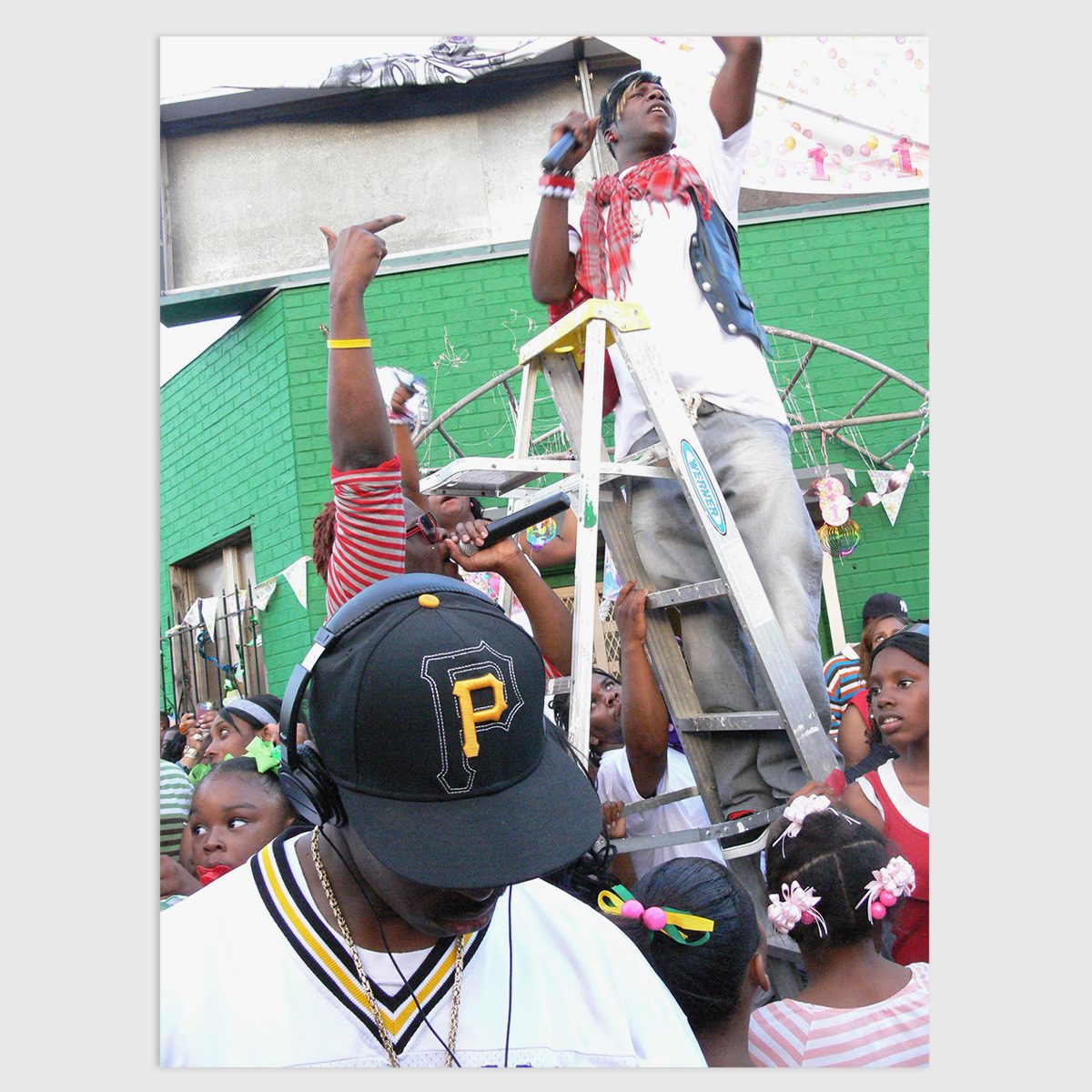
“In a sense, some of the females that would be interested and intrigued by the shows, they helped with the danger. Because they would ease the tension between the people who didn’t get it and the people who were just not tolerant of it. They kind of helped out with that because, I mean, sex sells. Be realistic. And most of those females who were involved, they were some of the hottest chicks around. So who wouldn’t want to go where all the hot chicks are? What guy? Even if they’re like, ‘oh I don’t like those gay people, I don’t like what they’re doing. I don’t like that man dressing up in dresses and lipsyncing to music’ type thing. But I mean, when all of the hot girls are there, looking sexy and fly, the fellas are coming too.”
– Addie, in a 2019 interview with Know Wave
“My studio has been here 33 years, I recorded over 300 albums in New Orleans. I pretty much recorded everyone in New Orleans, because there were kind of no Black studios in New Orleans when I started. And nobody wants to do hip hop, all the white studios were like, ‘no hip hop. No Bounce.’ Like Katey, Katey come in the studio, and they’re gonna get like, five gay guys and about six girls. Katey always ran with a big group, Katey and Dem Hoes. And most studios down here are like, ‘no we’re not going to have that.’
I recorded Freedia, I recorded Katey, Sissy Nobby, Vockah Redu, there was a group called SWA, Sissies Wit Attitude, I pretty much had all the gay people come to me, saying, ‘Felton, he don’t care!’ You know? I said, ‘I don’t care. Y’all got money? Come on through.’”
– Felton Langlois, in a 2019 interview with Know Wave
Felton Langlois is the owner and operator of Smallworld Studios, in New Orleans.
“DJ Duck? He didn’t like gays, at all. No gays. But he liked my music. So he wanted to deal with my music as long as he didn’t have to deal with me. We was in a room together before, but when it was time to do the music he wasn’t there. He came and got my vocals and brought them to his studio. He’s one of the ones, he didn’t like gays, he didn’t want to be around the gays, none of that. I think he’s over it now though. I ain’t seen him in a minute, in some years. He was real good at what he do, that’s what I’m saying.”
– Katey Red, in a 2019 interview with Know Wave
“To be honest, nobody wanted to be in the room with Katey, because they’re about to go up there with a bunch of men wearing dresses. So it would just be me, by myself, with a bunch of men twerking in dresses.”
– Felton Langlois, in a 2019 interview with Know Wave
Katey Red, “Melpomene Block Party.” Originally released on the CD Melpomene Block Party, 1999
“And another issue was, how do we put Katey on the cover? Again, Eldon was the guy that made things happen. So I’m like, ‘okay El, take Katey to Foot Locker, get a jersey and some tennis shoes, some baggy jeans, and we’ll take a picture.’ [laughs] Katey wasn’t having that! So, Katey was like, ‘No. If I’m going to take a picture, I’m going to take it in the clothes that I wear.’ I’m like, ‘naw, that’s not going to happen.’ So the first release that we released was just the name Katey Red on the cover.”
– A Take Fo Records executive, in a 2019 interview with Know Wave
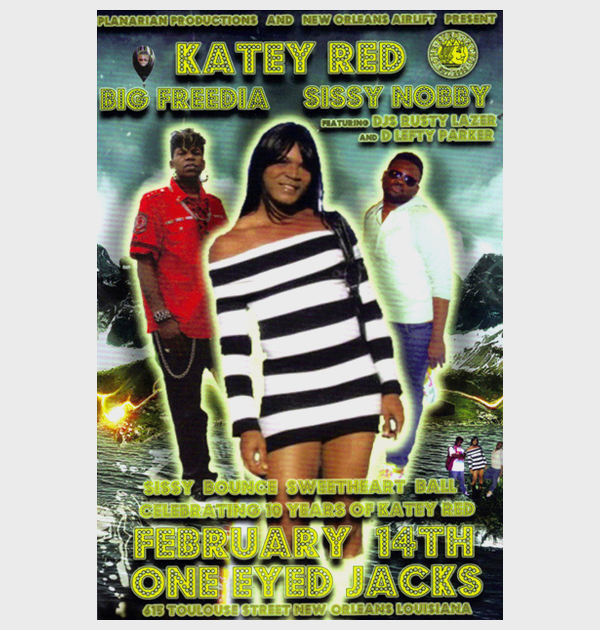
“I couldn’t give it to my family. My momma, she didn’t like it at all. ‘Katey Red is a dick sucker?’ She didn’t like that at all. She didn’t want to hear that shit. But now she listens to it. Twenty years later, she listens to it. But she told me she wanted to come grab me off that mic and beat the shit out of me.”
– Katey Red, in a 2019 interview with Know Wave
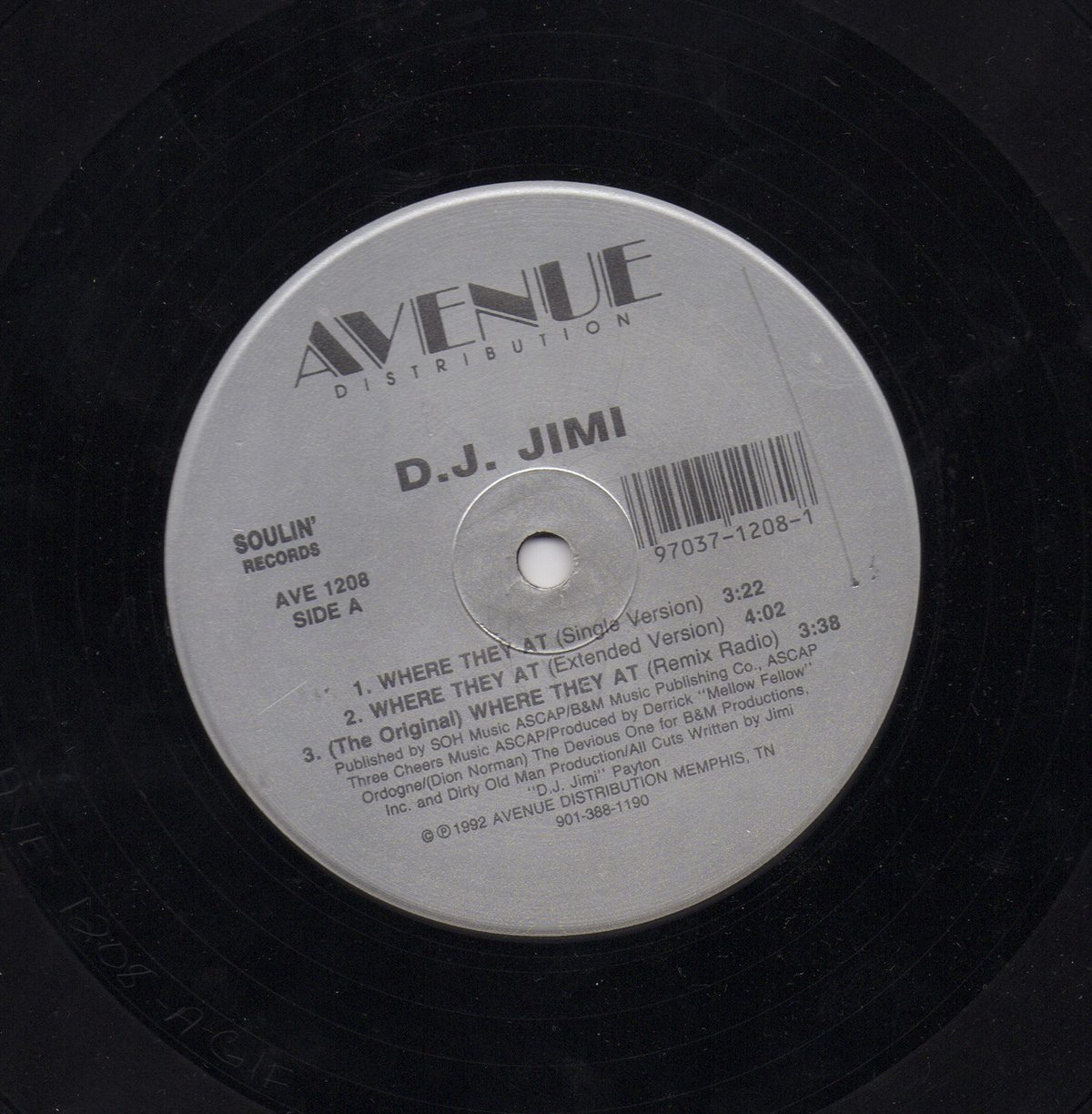
“Like I said, I was the first homosexual to do it. Well, the first openly homosexual to do it. Because DJ Jimi is gay too. And he came before me, but he wasn’t openly gay, he didn’t come out until like, when I started rapping. I guess he felt okay with it. A lot of people knew about it, they have songs people made, and they said something like, ‘I’m not feminine like DJ Jimi’ so they must’ve knew. But he wasn’t out out.”
– Katey Red, in a 2019 interview with Know Wave
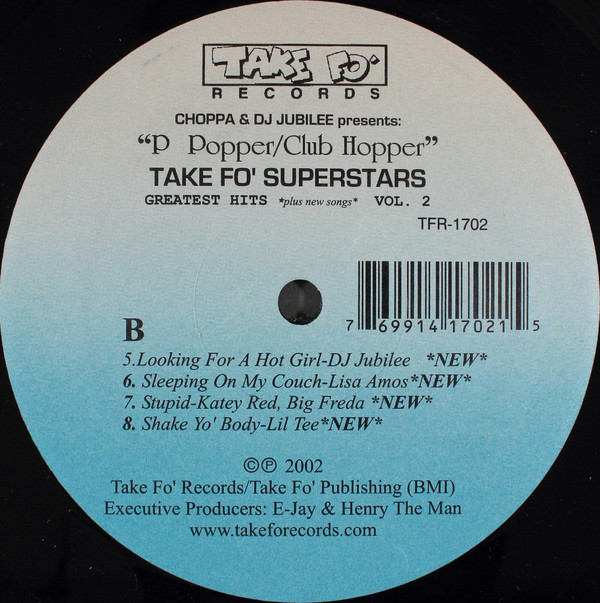
“Again, we’ve had some instances, Katey, myself, Freedia, Vockah, and a couple of other people, we’ve had some instances where we’ve had to deal with difficulties. Some bashing, some verbal mistreatment, but we found a way to be tough. Katey in particular, she was always tough. Always tough. Literally. Mentally and physically she was very tough, she would not back down, and she refused to not be able to express herself the way she did. And music, fortunately, saved a lot of conflict that could have happened had the music not been involved.”
– Addie, in a 2019 interview with Know Wave
“With that particular album, the reason why I like that so much, because she spoke on what was going on with, you know, our type. You know what I’m saying? The gays, what we go through with undercover boys, stuff like that. It was more lyrical, that’s why I liked it. She had songs that really spoke how boys, undercover boys, DL boys act when they’re around females and try to play on us. That’s why I liked the album so much. It connected. That why I liked it. The Bounce is good, I love the Bounce, but you know, when you can talk about things in your music that I can connect to, that gets me. I just love that.”
– Sissy Nobby, in a 2019 interview with Know Wave
“There was a period where it was dangerous. It was. When we were first coming out, we had a few people that had came before that kind of eased that door of acceptance and tolerance just a little bit, just enough for us to kind of squeeze through it. You know what I’m saying? They paid some prices for being who they are and being open about who they are. But the good thing about this city is this is a city of party freeness. I say that from a standpoint of, on Mardi Gras day, you can almost be anything you desire. Because of the illusion of Mardi Gras, you know what I mean? So in some ways, that one occurrence has been helpful to particular individuals who want to express themselves. Whether it be crossdressing, whether it be dressing flamboyant and open. As a young gay boy I was a Bounce dancer, you know? I didn’t dress the look, but I used to get out in the clubs and dance, and freely dance. But we had to be tough. We had to be willing to take the repercussions that may come behind that.”
– Addie, in a 2019 interview with Know Wave
Katey Red, “N_____ Out There (Playa Hatin).” Originally released on the album Y2Katey (The Millennium Sissy), 2000
“Yeah he had a lot of them hating on him. And some concerts and stuff, we was scared, but don’t let that stop your money, you see what I’m saying? So we just had to be on the safe side, but stuff happens everywhere you go. So we can’t run from it. At some concerts and parties and stuff, he had a few haters out there. But it ain’t let them stop him. He had some fans he had some non-fans. Some making songs about him and his dancers. There were some little parts about us. Hatin’ on him, they want more drama. If we were in the club or whatever and Katey performing, they just want drama. We ran across a few fights and all that, but that’s a part of life.”
– Kimberly Johnson Minix aka TMGKIM, in a 2019 interview with Know Wave
“Katey and Dem Hoes! Yes I was, a background singer. We all was background singers because if you listen to Katey and Dem Hoes you will hear, you know, a few of us. It was mostly me and Meshe that grabbed the mic. And you know we’d be dancing. Because everybody liked to shake down here. If you wasn’t shaking, you were singing. If you weren’t singing, you were shaking.”
– Nabe, in a 2019 interview with Know Wave
As a member of the group Dem Hoes, Nabe appears on the albums Melpomene Block Party and Y2Katey and performed with Katey Red countless times.
“I think my concerts is better than my music, period. Vockah Redu, he said, ‘Bitch, where you get the energy from? I just saw you backstage there tired and sleeping.’ I said, ‘Bitch, I got to do what I got to do. I know what I’m here for. I know my job!’ I’ll be laying out backstage, someone at the club will say, ‘is she ready?’ and my dancers will say, ‘you gonna see! you gonna see when she get up there!’ The energy. Vockuh Redu thought I snorted powder for a long time. That bitch kept saying, ‘Red, you can’t tell me girl.’ I smoke my weed, I drink my alcohol. I don’t do no powder. That’s how I be. I know what to do when I get up there.“
– Katey Red, in a 2019 interview with Know Wave
Katey Red and Dem Hoes in concert, 2000s. Videography: Angelina Polacheck. Courtesy Angelina Polacheck
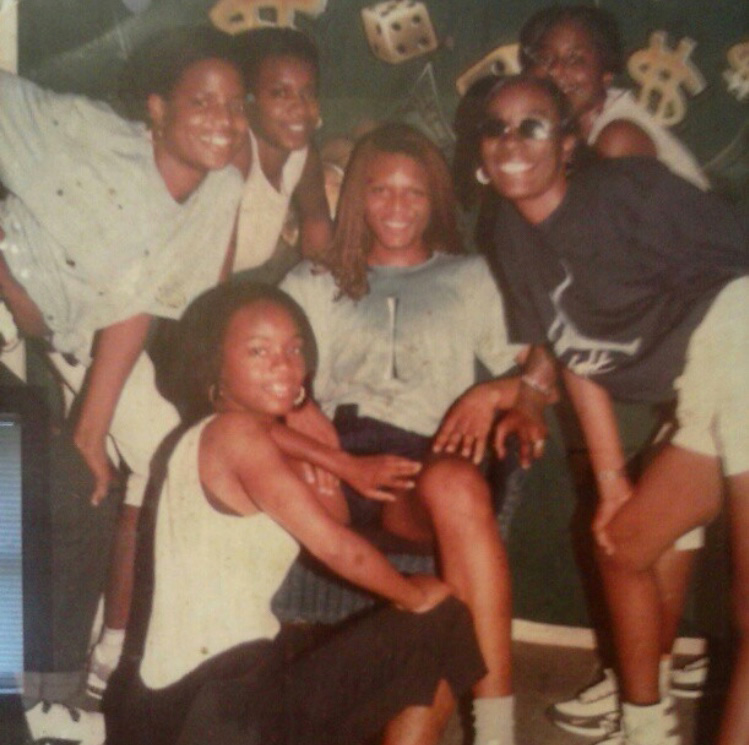
“When we used to go do shows back then, they always had to put us last because everybody wants to see Katey Red. They put us first, once. And once they seen Katey, everybody was leaving out the door. There’s only one Katey Red, and everybody loves Katey Red.”
– Meshe, in a 2019 interview with Know Wave
As a member of the group Dem Hoes, Meshe appears on the albums Melpomene Block Party and Y2Katey and performed with Katey Red countless times.
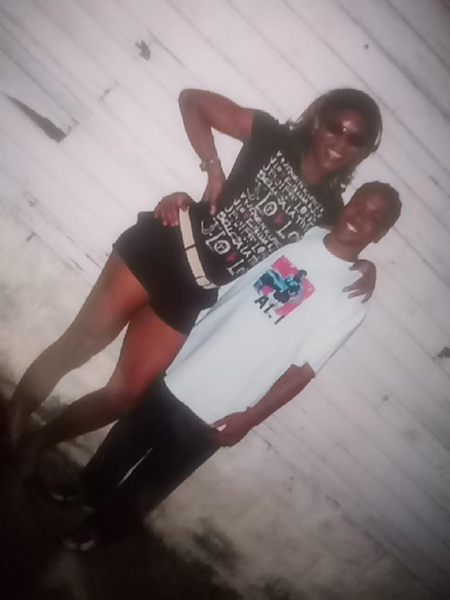
“Katey been out since ’98, when she first initially started this stuff. And we had met maybe three years before that, we were friends. Since then, there have been a couple of people. Freedia, Vockah Redu, they were kind of at the same time doing their thing. These people were able to utilize the platform which she had laid, so to speak. Katey Red started this shit. Katey Red started this shit with us being who we are, what we are, and not being apologetic about it. Watch us tear this bitch down. That was her words. I’m not saying that she started the raunchiness on the camera because we have Luke Skywalker and 2 Live Crew and all these people that they’ve been doing all this stuff with the girls dancing in the bikinis. But I’m talking about low down, dirty, outright, gutter, shake-it-down-and-do-you and it’s coming from a homosexual? Katey started that.”
– Addie, in a 2019 interview with Know Wave
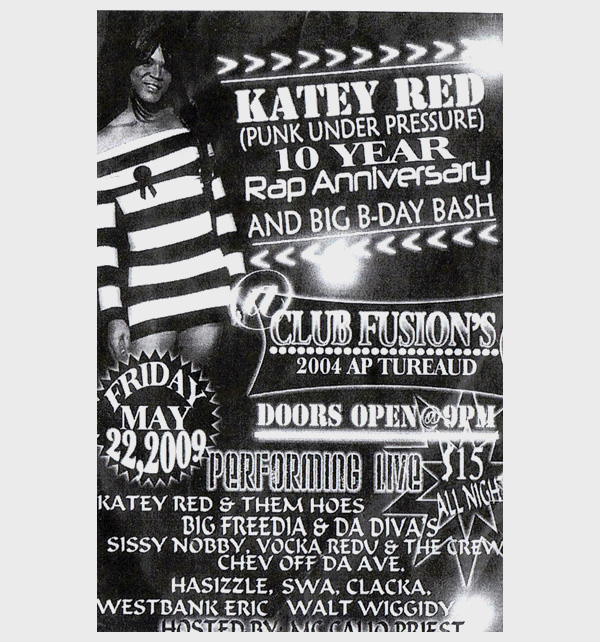
“My first CD was out in May 1999, and Jubilee just kept telling me, ‘you are going to be something to wow the new millennium,’ you know? He just kept telling me, ‘you don’t know but you’re about to change the whole game, girl.’ I saw. I changed the whole goddamn world. People look at me as the creator of Bounce music but I’m not the creator of Bounce music. I’m just the first homosexual, openly gay, transgender to do Bounce music. It makes sense? It’s just like, when I started, a lot of stuff changed. Artists changed, the music changed, you know, the vibe changed, the concerts changed, like everything changed when I started. That’s why people look at me as legendary and iconic. That was 20 years ago, I celebrate my 20 year anniversary this year. 20 years in the game! No Bounce artist in their right mind can say they went 20 years in the Bounce game nonstop. Freedia is coming close! but she’s like two and a half years behind me, so if I don’t stop she’ll never catch up. But yeah, no Bounce artist in this city that you can name did it for 20 years strong, nonstop, and survived off it, nonstop.”
– Katey Red, in a 2019 interview with Know Wave
